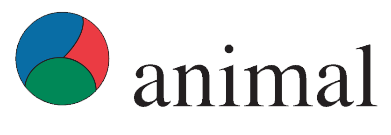Document type : Scientific article published in Frontiers in Veterinary Science
Authors: Luisa Magrin, Marta Brscic, Isabella Lora, Paola Prevedello, Barbara Contiero, Giulio Cozzi, Flaviana Gottardo
Preview: Abattoir post-mortem inspections offer a useful tool for animal disease surveillance. The present cross-sectional study aimed at assessing the prevalence of rumen mucosa, lung, and liver lesions in 153 randomly selected batches of finishing beef cattle through a post-mortem inspection at the abattoir. At least 15 animals per batch were inspected at slaughter by two veterinarians for a total of 2,161 animals (1,376 bulls; 785 heifers) coming from 80 Italian commercial farms. Rumens were inspected by recording as binary variables (presence/absence) signs of hyperkeratosis, ruminitis, ulcer, and star scars. Similarly, lungs were inspected for signs of pneumonia and livers for signs of lipidosis, abscesses, and/or adherence. Hyperkeratosis of the mucosa and signs of ruminitis were detected in 58 and 30% of the inspected rumens, respectively. Ruminal star scars were more prevalent in bulls than in heifers (18 vs. 11%; P < 0.05). Signs of severe pneumonia were observed in 10% of the lungs; abscess and/or adherence in 4% of the livers. Hyperkeratosis of rumen mucosa was correlated to signs of ruminitis, and signs of ruminitis were correlated to star scars. No correlations were found between hepatic lesions and any other rumen or lung disorders. The wide variability observed among batches for the prevalence of specific lesions suggested the development of a benchmarking system to provide feedback to the farm veterinarians, as these lesions can be reflective of a subclinical disease status not easy to be detected in the live animal. Quartiles of the batch prevalence of rumen, lung, and liver alterations (if ≥1%) were calculated as a benchmarking tool, and third quartile value was proposed as an alarm threshold for each lesion. The use of the benchmarking system could allow to allocate each inspected batch to a specific "health class." Critical batches with a prevalence above the alarm threshold for a given lesion should be reported to veterinarians of the origin farms where actions should be taken in order to identify and lower the risk factors for that specific health issue. Knowledge of post-mortem inspection data along with the implementation of the proposed benchmarking system should help farm veterinarians to improve herd management from a health and welfare perspective.




